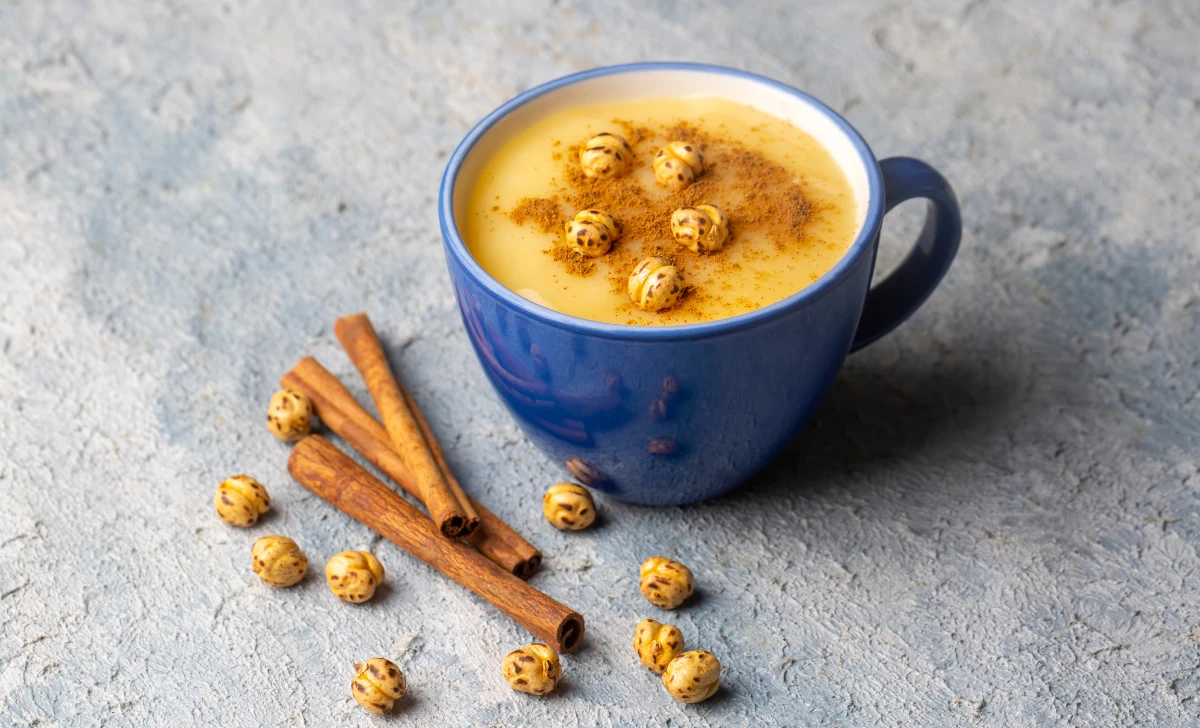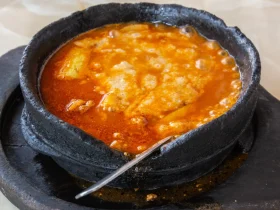Are you ready to embark on a culinary adventure that combines history, culture, and taste? Look no further than the intriguing world of boza! This unique fermented drink has been cherished for centuries across various cultures. In this article, we’ll dive into the fascinating world of boza, explore its history and cultural significance, and guide you through a step-by-step process to create your very own batch of this delightful beverage.
[ez-toc]
History
The story of boza is like a tapestry woven through time, connecting cultures, civilizations, and flavors. This fermented beverage’s history dates back to the depths of antiquity, with threads of its origin stretching across Central Asia and the Middle East.
Origins in Central Asia
Boza’s origin story is as diverse as the cultures it has touched. Tracing its roots back to Central Asia, particularly among the Turkic tribes, boza was initially a product of necessity. Nomadic communities relied on the available ingredients – mainly grains and water – to create a sustaining beverage that could withstand the challenges of their lifestyle.
Spread to the Middle East and Beyond
As these tribes migrated and interacted with other civilizations, the art of boza-making traveled with them. By the 8th century, boza had established its presence in the Middle East. In this region, it found a new dimension as it merged with the culinary traditions of the Byzantines and the Arab world. It wasn’t just a drink anymore; it was a symbol of cross-cultural exchange.
Ottoman Era and Boza Vendors
The Ottoman Empire played a pivotal role in boza’s journey. During this era, boza gained immense popularity and turned into a staple in the empire’s culinary landscape. Boza vendors, known as “bozacı,” became cherished members of society. They set up shop in bustling markets and street corners, where they served glasses of this velvety elixir to passersby. The act of enjoying boza became intertwined with leisurely strolls through the vibrant streets of the empire’s cities.
Cultural and Social Significance
Boza became more than just a beverage; it became a cultural symbol. It was a bridge that connected people across different social classes. From the sultans in their palaces to the common folk in the streets, everyone savored the unique flavors of boza. It brought people together, fostering conversations, camaraderie, and a shared appreciation for tradition.
Modern Resurgence
While boza’s popularity waned in some regions over time, its legacy endured. In recent years, there has been a resurgence of interest in this historic drink. Artisanal boza producers are reviving traditional recipes, ensuring that the magic of boza continues to captivate modern taste buds.
Preserving Tradition through Taste
Boza is more than just a fermented beverage; it’s a time capsule that holds the stories of generations past. With every sip, you’re not just tasting a harmonious blend of grains, water, and yeast – you’re savoring the flavors of history, culture, and resilience. As you embark on your boza-making journey, remember that you’re adding a new chapter to this ever-evolving tale of taste and togetherness.
Time
| Step | Cooking and Preparation Time |
|---|---|
| Preparing the Base | 8 hours (soaking and cooking time) |
| Adding the Fermentation Agent | 1 hour (including cooling time) |
| Letting the Magic Happen | 12-24 hours (fermentation time) |
Remember, while boza does require some time and patience, the end result is definitely worth the wait!
Ingredients
| Ingredients | Quantity |
|---|---|
| Millet or Bulgur | 1/4 cup |
| Water | 1 cup |
| Sugar | 1/4 cup |
| Yeast | 1/4 teaspoon |
This quantity is perfect for sharing a delightful boza experience with a friend or loved one!
Directions
Step 1: Preparing the Base
- Wash and Soak the Millet or Bulgur: Begin by washing the millet or bulgur thoroughly under cold water. Place the washed grains in a bowl and cover them with water. Allow them to soak for about 6 to 8 hours, or overnight. This soaking process will soften the grains and prepare them for cooking.
- Cook the Grains: Once the grains have soaked, drain the water and transfer the grains to a pot. Add 1 cup of fresh water to the pot. Place the pot on the stove over medium heat and bring the mixture to a boil. Reduce the heat to low and let the grains simmer until they are tender and fully cooked. This should take approximately 20-25 minutes.
Step 2: Adding the Fermentation Agent
- Introduce Sugar to the Mixture: Once the grains are cooked, remove the pot from the heat. Add the sugar to the pot and stir well to ensure that it dissolves completely. The sugar will provide the sweetness that balances the tangy flavors of the fermentation process.
- Allow the Mixture to Cool: After adding the sugar, let the mixture cool down to room temperature. This step is important as adding yeast to a hot mixture can hinder the fermentation process. Give it about 30 minutes to cool.
Step 3: Letting the Magic Happen
- Add the Yeast: Once the mixture has cooled down, it’s time to introduce the magic ingredient – yeast. Sprinkle 1/4 teaspoon of yeast over the surface of the mixture. The yeast will play a crucial role in fermenting the mixture and giving boza its distinct taste and texture.
- Cover and Ferment: Gently stir the mixture to ensure that the yeast is evenly distributed. Cover the pot with a clean kitchen towel or plastic wrap. Place the pot in a warm and undisturbed location for fermentation. Allow the mixture to ferment for 12 to 24 hours. During this time, the yeast will work its magic, transforming the mixture into the velvety and tangy boza.
- Check for Fermentation: After the fermentation time has elapsed, check the mixture. It should have a slightly thickened texture and a tangy aroma. If you’re satisfied with the taste and consistency, your boza is ready to be enjoyed!
Step 4: Serving and Enjoying
- Chill and Serve: Transfer the fermented boza to glass containers or serving glasses. Place the containers in the refrigerator to chill for a few hours. Chilling the boza will enhance its flavors and make it even more refreshing.
- Garnish and Savor: Before serving, you can garnish the boza with a sprinkle of cinnamon or crushed nuts for an extra layer of flavor and texture. Serve the chilled boza to yourself and your fellow boza enthusiast. Take a sip, close your eyes, and let the flavors transport you to a world of tradition and delight.
Creating boza is more than just a recipe; it’s an act of embracing history and culture through taste. As you savor each sip of this velvety elixir, remember that you’re participating in a tradition that spans centuries and connects cultures. Cheers to the magic of boza!
Equipment Required
Nutrition Information
| Nutrition Information | Per Serving |
|---|---|
| Serving Size | 1 cup (240 ml) |
| Calories | 180 |
| Total Fat | 1g |
| Saturated Fat | 0g |
| Trans Fat | 0g |
| Cholesterol | 0mg |
| Sodium | 10mg |
| Total Carbohydrates | 40g |
| Dietary Fiber | 2g |
| Sugars | 12g |
| Protein | 4g |
| Vitamin D | 0% DV |
| Calcium | 2% DV |
| Iron | 8% DV |
| Potassium | 4% DV |
Note: Nutritional values are approximate and can vary based on specific ingredients and serving sizes. It’s always a good idea to use a nutrition calculator for precise calculations if needed.
Tips
- Quality Grains: Choose high-quality millet or bulgur for the best results. Opt for organic or whole grains to ensure a rich flavor and texture.
- Temperature Matters: Maintain a warm and consistent environment during fermentation. A room temperature of around 70-75°F (21-24°C) is ideal for yeast activity.
- Yeast Activation: If you’re unsure about the potency of your yeast, you can activate it before adding it to the mixture. Dissolve the yeast in a small amount of warm water and a pinch of sugar. Wait for it to foam before adding it to the mixture.
- Sweetness Level: Adjust the amount of sugar according to your taste preferences. If you prefer a sweeter boza, you can increase the sugar slightly.
- Fermentation Time: The fermentation time can vary depending on the temperature and yeast activity. Taste and consistency are your guides. Longer fermentation generally yields a tangier flavor.
- Hygiene: Ensure all utensils, containers, and surfaces are clean and sanitized to promote healthy yeast growth and prevent contamination.
Pros & Cons
| Pros | Cons |
|---|---|
| ✅ Unique cultural experience | ❌ Requires patience during fermentation |
| ✅ Nutrient-rich fermentation | ❌ Tangy taste may not suit all palates |
| ✅ Gut-friendly probiotics | ❌ Longer preparation time |
| ✅ Versatile flavor variations | ❌ Potential for inconsistent results |
| ✅ Connects tradition and taste | ❌ Requires some familiarity with fermentation |
Conclusion
As we reach the bottom of the glass, it’s clear that boza isn’t just a drink – it’s a portal to the past, a celebration of culture, and a testament to the power of fermentation. The velvety texture, the tangy notes, and the stories it carries within each sip make boza an experience that transcends time and bridges generations.
By embarking on the journey of crafting your own batch of boza, you’re not just following a recipe; you’re embracing a tradition that has traveled through centuries and continents. From its humble beginnings among Central Asian nomads to its place in Ottoman streets and modern kitchens, boza is a witness to the ebb and flow of history.
So, why not dip your toes into this rich heritage? Gather your millet or bulgur, let the yeast weave its magic, and soon you’ll find yourself raising a glass of your very own homemade boza. Share it with friends, spark conversations, and let the flavors evoke stories of times gone by. With every sip, you’re not just tasting a beverage – you’re immersing yourself in culture, savoring tradition, and creating a memory.
Don’t be daunted by the fermentation process or the mysteries of centuries past. Embrace the journey, experiment with flavors, and adapt the recipe to make it your own. Boza is not just about taste; it’s about the experience of crafting something timeless and meaningful.
So, why wait? Dive into the world of boza-making and embark on a flavorful adventure that bridges past and present. Let your taste buds be your guide, and with each sip, remember that you’re sipping on history itself. Cheers to boza – a drink that’s not just in the glass, but in the heart!
Facts
- Fact 1: A Taste of the Past 🕰️
- Did you know that boza has been enjoyed since the 8th century? This ancient fermented drink has been delighting taste buds for over a thousand years, making it not just a recipe, but a sip of living history! 🥂
- Fact 2: The Ottoman Boza Vendors 🛒
- Imagine a time when boza vendors roamed Ottoman streets, their carts brimming with this velvety delight. These vendors, known as “bozacı,” were beloved members of society, serving up cups of tradition and camaraderie. 🚚
- Fact 3: Boza’s Tangy Transformation 🌬️
- Ever wonder how boza gets its unique tangy taste? It’s all thanks to the fermentation process, where friendly bacteria turn sugars into tangy goodness! It’s like a microscopic party in every glass. 🦠
- Fact 4: An Unlikely Fusion 🌍
- Boza’s journey didn’t stop at its origins in Central Asia. It hitched a ride on the cultural caravan and fused with Byzantine and Arab culinary traditions in the Middle East. The result? A multicultural masterpiece in a glass! 🌐
- Fact 5: Decadent Variations 🍫🌰
- Looking for a flavor adventure? Boza doesn’t play by the rules! Try infusing it with chocolate or adding crushed nuts for a nutty twist. It’s like a playground for your taste buds! 🍫🌰
FAQ’s
Is boza alcoholic?
No, traditional boza is a non-alcoholic fermented beverage. The fermentation process creates a small amount of alcohol, usually around 0.5% or less, which is considered negligible.
Can I use alternative sweeteners?
Yes, you can substitute traditional sugar with alternative sweeteners like honey, maple syrup, or stevia. Keep in mind that the choice of sweetener might impact the flavor and fermentation process slightly.
How long does boza stay fresh?
Homemade boza can be stored in the refrigerator for up to 5-7 days. However, its taste and texture might change over time due to ongoing fermentation.
Is boza suitable for lactose-intolerant individuals?
Yes, traditional boza is typically lactose-free. It’s made from grains and water, with no dairy ingredients. However, always check the ingredients and recipe variations to ensure lactose-free options.
Can I consume boza daily?
While boza offers probiotic benefits, it’s best enjoyed in moderation. Drinking it daily may lead to excessive consumption of sugars and calories. Balance is key.
Can I speed up the fermentation process?
It’s recommended to follow the fermentation time mentioned in the recipe for optimal flavor and texture. Rushing the process may result in an underdeveloped taste.
Why did my boza turn too sour?
Overfermentation or high temperatures during fermentation can lead to a tangier taste. Monitor the fermentation time and temperature closely to achieve the desired balance.
Can I use a different type of grain?
Yes, you can experiment with grains like rice, oats, or quinoa. Keep in mind that different grains may yield slightly varied flavors and textures.
Is boza a good source of probiotics?
Yes, boza’s fermentation process introduces beneficial bacteria. While it’s not as probiotic-rich as yogurt or kefir, it still offers some gut-friendly properties.
Can I use instant yeast for fermentation?
Yes, you can use instant yeast for convenience. However, the fermentation process might be slightly different, so adjust the quantity according to the yeast’s potency.












Leave a Review